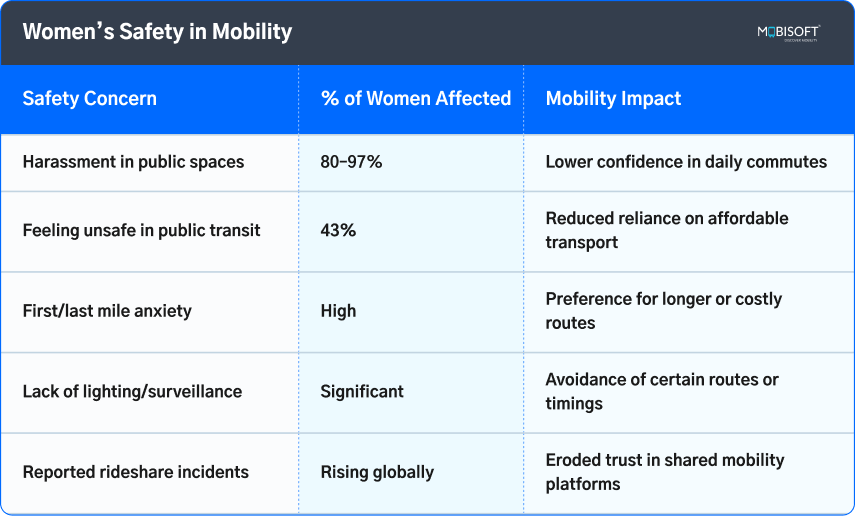“Panic Button System for Women’s Safety in Shared Mobility”

While technology and innovation push society ahead, women still feel unsafe during travel. Even more concerning, reports and surveys highlight this reality without showing many signs of improvement. Be it public transportation, ridesharing, or through their daily work commutes, concerns about women's safety remain significant.
An Observer Research Foundation survey revealed that 56% of women interviewed had been sexually harassed on public transport, and 50% had given up educational or employment opportunities out of fear for safety on their daily commute. These frightening numbers serve to highlight that safety is more than a social issue. It is a workplace and mobility challenge that directly impacts companies, employees, and service providers.
One critical solution gaining traction is the use of panic buttons. These panic button systems provide women with a direct way to call for help during emergencies. Whether integrated into transport apps or vehicles, they link users to law enforcement or security teams instantly. This article explores how panic buttons strengthen women’s safety, the technology behind them, and their long‑term impact in corporate and shared mobility contexts.
For enterprises looking to strengthen staff protection, exploring a robust employee transport safety solution can complement panic button systems.
The Silent Reality of Women’s Commutes
University of Manchester data shows massive rates of underreporting of sexual harassment and violence in public transport throughout the globe. Only 17% are reported. The risk does not just come during the journey. The “first and last mile” of travel often creates the greatest anxiety. These moments discourage women from using public transport and can force them into longer or costlier routes to feel secure.
Part of the problem stems from the poor design of transit spaces. Dimly lit areas, the absence of staff, and weak surveillance encourage harassment. In corporate mobility, women traveling for work may find themselves in unfamiliar zones, where the sense of exposure is even higher.
Shared mobility platforms face similar challenges. While services like ridesharing promise convenience, cases of harassment have been reported globally. These incidents erode trust and highlight why safety features, such as emergency panic buttons, cannot remain optional. Panic buttons for women, when integrated effectively, help restore confidence by offering a visible, immediate layer of protection.
Learn more about building safer shared mobility and logistics safety systems for employees and commuters.
Women’s Safety in Mobility – Key Insights

How can Panic Buttons be Helpful?

Panic buttons, though conceived as mere safety gadgets, are essential in emergencies. Their significance lies in minimizing delays so that women obtain immediate access to help upon feeling they are in harm's way. For corporate transportation as well as carpooling settings, this one aspect instills confidence and faith among users.
Immediate Access to Help
The first purpose of having panic buttons is speed. During emergencies, women shouldn't have to search for numbers or state their exact location. With one touch, they are instantly connected to a dedicated team. It can be in-house security staff, neighborhood police, or an emergency panic button hotline. That immediate response cuts out hesitation and ensures that help is delivered promptly.
READ MORE:
How Panic Buttons Enhance Women’s Safety in Corporate and Shared Mobility
- AI
- Vitamins
- Health
- Admin/office jobs
- News
- Art
- Causes
- Crafts
- Dance
- Drinks
- Film
- Fitness
- Food
- Jogos
- Gardening
- Health
- Início
- Literature
- Music
- Networking
- Outro
- Party
- Religion
- Shopping
- Sports
- Theater
- Wellness


